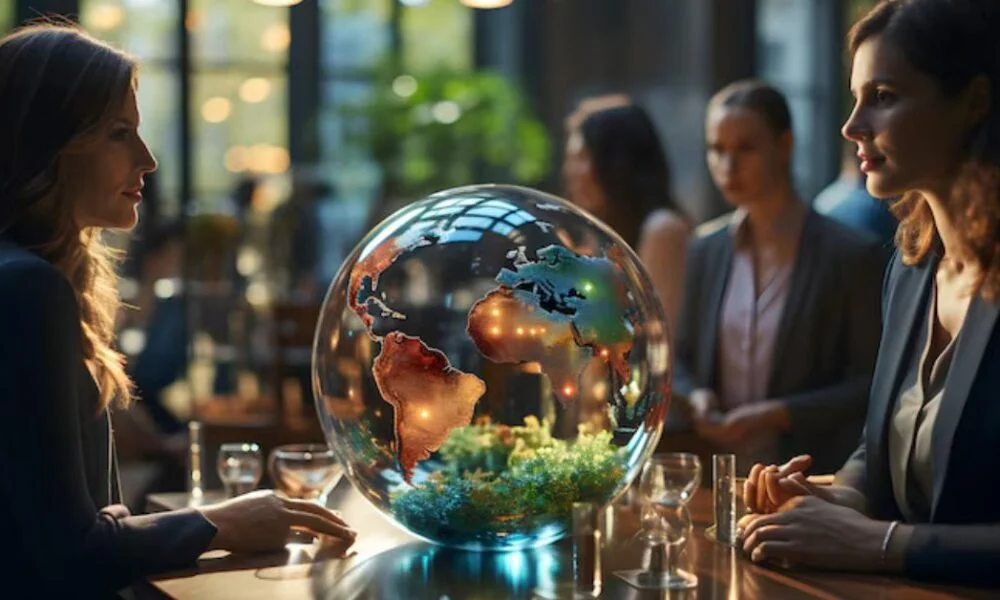Conservation is an ever-growing global movement that encourages individuals, communities, and policymakers to make choices that protect and sustain our natural world. With rising concerns over issues like illegal wildlife trade, climate change, and the preservation of biodiversity, platforms like The VoicesofConservation.org blog provide insights and guidance for those eager to contribute to conservation efforts. Here, we explore five essential questions, inspired by The VoicesofConservation.org blog, that aim to empower readers with knowledge and motivate them toward meaningful action.
1. What Steps Can Individuals Take to Combat the Illegal Wildlife Trade, and How Can Communities Contribute to Anti-Trafficking Efforts?
The illegal wildlife trade poses a severe threat to biodiversity, leading to the extinction of many species and the disruption of ecosystems. Combatting this global issue requires a combination of individual awareness, community participation, and governmental regulation. Individuals can make a difference by educating themselves about the impact of wildlife trafficking, avoiding products made from endangered species, and supporting organizations dedicated to this cause. For example, donating to or volunteering with organizations that work to protect endangered species can be a powerful step.
Communities, especially those near biodiversity hotspots, play a critical role in anti-trafficking efforts. Community-led patrols and local awareness campaigns, for instance, are effective in deterring poachers. Community-based wildlife monitoring programs and partnerships with law enforcement also contribute significantly. The VoicesofConservation.org blog highlights how grassroots initiatives have successfully reduced trafficking activities by involving local communities in the protection of their own ecosystems. Such collective action not only prevents illegal activities but also strengthens the bond between communities and the natural world they depend on.
2. How Does Environmental Education Influence Sustainable Practices in Communities Around the World?
Environmental education is pivotal in driving sustainable lifestyle changes within communities. When people understand the effects of their choices on the environment, they are more likely to adopt sustainable practices that benefit their community and the planet. Case studies from countries around the world reveal how environmental education initiatives spark lasting change. For example, programs that teach the principles of recycling, composting, and water conservation lead to increased participation in these practices.
In some regions, environmental education is also embedded in local school curriculums, introducing concepts like renewable energy and biodiversity preservation from an early age. As The VoicesofConservation.org blog discusses, the success of these programs is evident in lifestyle changes—reduced waste, energy conservation, and eco-friendly consumer choices—that collectively contribute to a healthier environment. By equipping communities with knowledge, environmental education encourages self-sustaining practices that continue to benefit future generations.
3. What Challenges Do Wildlife Rangers Face in Protecting Endangered Species, and What Training is Essential for Their Role?
Wildlife rangers are at the frontlines of conservation, facing numerous challenges while protecting endangered species. They work in remote areas, often under hazardous conditions, and face threats from poachers and wildlife. For instance, the rangers featured on The VoicesofConservation.org blog, like Leo, encounter physical and emotional hardships as they navigate rugged terrain and endure long hours in isolated areas. Their responsibilities range from tracking animals to deterring illegal activities, making their role indispensable in the fight against extinction.
Training is crucial for these rangers. They require extensive knowledge of local wildlife, first-aid skills, and survival techniques. Some organizations also provide them with training in conflict resolution, given the confrontations that may arise with poachers. Additionally, technological tools like GPS systems and drones are becoming integral to modern wildlife protection. Equipping rangers with these resources and training enables them to operate more safely and efficiently. By supporting ranger programs, individuals can contribute to their safety and effectiveness in the field, as The VoicesofConservation.org blog emphasizes.
4. How Are Sustainable Urban Living Practices Evolving, and What Are Some Innovative Ways Cities Are Promoting Green Lifestyles?
Urban areas are often seen as hubs of pollution, but they are also home to innovative sustainability practices. Cities worldwide are recognizing the importance of reducing their environmental impact and are promoting green lifestyles in a variety of ways. For instance, many cities have embraced eco-friendly transportation options, such as bike-sharing programs and electric buses, which reduce air pollution and dependency on fossil fuels. Green building codes and the integration of energy-efficient technologies in housing are also helping urban populations lower their carbon footprints.
Beyond transportation and building, some cities have invested in extensive green spaces to improve air quality and support biodiversity. Rooftop gardens, community gardens, and urban farming initiatives encourage residents to grow their own food, reducing reliance on long-distance transportation of produce. The VoicesofConservation.org blog highlights cities that prioritize sustainable living by incentivizing solar energy use and encouraging waste reduction programs. These urban initiatives are proof that with careful planning, even densely populated areas can become models of environmental responsibility.
5. In What Ways Can Individuals Get Involved in Conservation Efforts, and What Small Actions Have a Big Impact?
While large-scale conservation initiatives are essential, individuals can contribute meaningfully through small, everyday actions. Simple changes like reducing single-use plastics, conserving water, and choosing sustainable products can collectively lead to significant environmental benefits. For instance, reducing meat consumption even slightly has been shown to lower greenhouse gas emissions and reduce strain on natural resources. Educating oneself on sustainable practices and spreading this knowledge within one’s network can also have a multiplier effect.
Supporting conservation organizations financially or by volunteering is another powerful way to get involved. For instance, many organizations offer citizen science programs where individuals can help monitor wildlife or contribute to conservation databases. The VoicesofConservation.org blog encourages readers to take small but impactful steps, reminding us that individual actions, when multiplied across communities, can make a profound difference in protecting the planet.
Conclusion
Through these essential questions, The VoicesofConservation.org blog sparks thought and action on critical environmental issues. From combatting wildlife trafficking and promoting environmental education to supporting wildlife rangers and embracing sustainable urban living, each topic highlights the diverse ways in which we can all contribute to a more sustainable future. Engaging in conservation doesn’t require grand gestures; sometimes, the smallest actions—like choosing reusable products or learning more about environmental issues—can have the most profound impact.
In exploring these questions, readers are encouraged to reflect on their own actions and consider the ways in which they can become part of a global conservation effort. Together, through awareness and collaboration, we can make strides toward a healthier planet and a more sustainable way of life. The VoicesofConservation.org blog serves as a valuable resource and reminder that everyone has a role to play in protecting our world for future generations.



